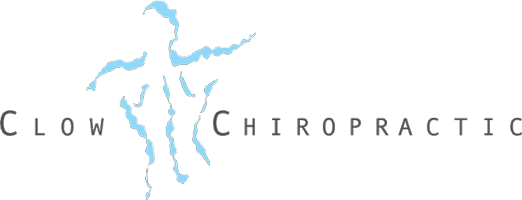Call Us
321-725-8778Visit Our Location
145 Palm Bay Rd NE #120, West Melbourne, FL 32904
Clinic Openings
6 Days a week
Sports injuries can happen to anyone, whether you're an elite athlete or someone who enjoys recreational activities. From a twisted ankle to a pulled muscle, knowing what to do immediately after a sports injury can significantly impact the healing process and prevent long-term complications. Whether it's your first injury or you're a seasoned athlete, understanding the steps to take right after an injury and how to care for it as you recover is essential.
In this blog, we’ll explore the immediate steps to take after a sports injury and how to manage your ongoing care for effective recovery. With the right approach, you can get back to doing what you love sooner, without risking further damage or complications.
When you sustain a sports injury, it’s important to act quickly to prevent additional damage and to start the healing process. The first 48 hours after an injury are particularly crucial, so following the right steps immediately after can make a big difference in your recovery time.
One of the most well-known and effective methods for treating sports injuries is the R.I.C.E method: Rest, Ice, Compression, and Elevation. Here’s how to implement each of these steps:
Pain is a common side effect of sports injuries, and managing it effectively will help you rest and heal. Over-the-counter pain relievers like ibuprofen (Advil) or acetaminophen (Tylenol) can help reduce pain and inflammation. If you're unsure of which pain reliever to use or if you have any underlying health conditions, consult with a healthcare provider.
Be cautious when using pain medication, as masking pain can sometimes encourage you to return to activity too soon, which can aggravate the injury.
In the aftermath of a sports injury, hydration is key. Drinking water helps prevent further tissue damage by maintaining healthy circulation and facilitating the removal of waste products from the body. Hydration also supports tissue repair, so ensure you are drinking enough water, especially if you're using ice or heat therapy.
In some cases, a sports injury requires professional medical evaluation. You should see a healthcare provider if:
In these cases, a doctor or sports medicine specialist will be able to assess the severity of the injury and provide a proper treatment plan.
After the initial treatment phase, it’s important to continue caring for your injury through rehabilitation and recovery strategies. This phase of healing ensures that you regain strength, mobility, and flexibility in the injured area. Here’s how you can continue to care for your injury as it heals:
After the acute phase of the injury (the first 48 hours), it's important to slowly begin moving the injured area to prevent stiffness and improve flexibility. Start with gentle range-of-motion exercises, particularly if you’ve suffered a sprain, strain, or soft tissue injury.
Be sure to move at a pace that feels comfortable to you, avoiding any sudden movements or forcing the joint or muscle into positions that cause pain.
Physical therapy is one of the most effective ways to recover from a sports injury and prevent long-term problems. A physical therapist can work with you to develop a program of specific exercises to improve your strength, flexibility, and balance, all of which are crucial for full recovery.
Therapy can include:
Physical therapy is particularly beneficial for more severe injuries, such as fractures, sprains, or ligament tears.
After the initial swelling goes down (usually after 48-72 hours), you can begin applying heat therapy to encourage blood flow to the injured area and promote healing. Heat can help relax tight muscles and alleviate stiffness.
Nutrition plays a vital role in the recovery process, and eating the right foods can help repair tissues and reduce inflammation. Focus on:
Maintaining a balanced diet ensures that your body has all the nutrients it needs to heal efficiently.
While active rehabilitation is important, adequate rest remains crucial throughout the recovery process. Don’t push yourself to return to sports or heavy exercise too soon. Doing so could lead to re-injury or prolonged recovery. Pay attention to your body’s signals and allow yourself the time to heal fully before returning to activity.
Once your injury has healed sufficiently, you may want to return to sports or exercise. However, this process should be gradual. Start with light activity, such as walking or swimming, and progressively increase the intensity of your workouts as you regain strength and flexibility.
If you’ve sustained an injury to a joint, such as an ankle or knee, be particularly mindful of impact activities (running, jumping) and pivoting motions until your joints are stable and strong enough to handle these movements.
Once you’ve recovered from your injury, it’s important to focus on long-term injury prevention. Consider the following:
By following these prevention strategies, you can reduce the likelihood of future sports injuries.
Dealing with a sports injury can be frustrating, but with the right immediate care and ongoing rehabilitation, you can get back to your active lifestyle quickly and safely. Whether it’s using the R.I.C.E method in the initial phase or working with a physical therapist to regain strength and mobility, taking a proactive approach to recovery is key.
If you're suffering from a sports injury and need personalized treatment or guidance, Clow Integrated Medical Center is here to help. Our team of medical professionals can provide you with a tailored recovery plan, offering everything from physical therapy to nutritional advice, to get you back on track.
Don’t let your sports injury hold you back any longer. Contact Clow Integrated Medical Center today to schedule a consultation and start your recovery journey. Let us help you return to the activities you love!

